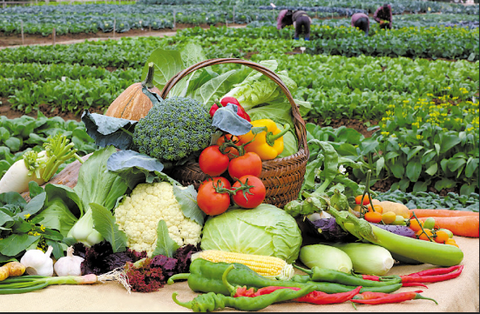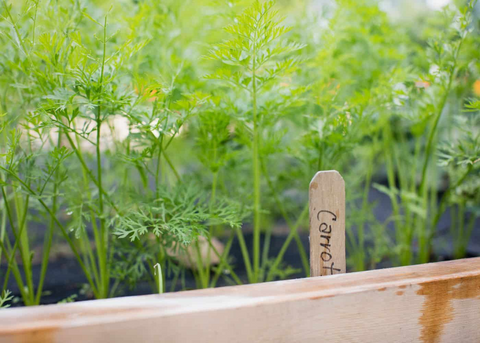Gardening and art therapy are two powerful forms of self-expression and healing. When combined, they create a harmonious synergy that promotes emotional well-being, self-discovery, and personal growth. In this blog, we'll delve into the world of gardening and art therapy, exploring how they come together to facilitate creative expression in nature.The following content also has some reference value for raised garden beds
 .
.
The Healing Gardens
Gardens have been cherished for centuries as places of solace and rejuvenation. Their connection to the natural world, with its sights, sounds, and fragrances, can provide a calming and grounding environment that is conducive to healing. Gardens offer a blank canvas where one can engage with nature in a meaningful way. Here's how gardens serve as therapeutic spaces:
Sensory Engagement
- Sight: The colors, shapes, and beauty of plants and flowers can inspire and soothe the mind.
- Sound: Birds singing, leaves rustling, and water flowing create a symphony of natural sounds that can be both tranquil and uplifting.
- Touch: The act of planting, weeding, and caring for plants engages the sense of touch, which can be grounding and calming.
Mindfulness and Presence
- Gardening encourages mindfulness and being present in the moment. Tending to the garden allows individuals to connect with their surroundings and their own inner experiences.
Stress Reduction
- The act of gardening, surrounded by nature, promotes relaxation and helps reduce stress and anxiety. It's a wonderful way to disconnect from the demands of daily life and focus on the present moment.
Physical Exercise
- Gardening involves various physical activities, from digging and planting to weeding and watering. These movements provide low-impact exercise, promoting flexibility, strength, and coordination.
Creativity and Self-Expression
- Designing and arranging the garden allows for creative expression. Gardeners make choices about plant placement, color schemes, and garden layout, which are all forms of artistic expression.
Connection to Nature
- Gardening fosters a deeper connection to the natural world. Being in touch with the earth and the changing seasons can be grounding and spiritually enriching.
Nurturing and Growth
- Watching plants grow and thrive under your care can be deeply rewarding. This nurturing aspect of gardening can boost self-esteem and a sense of accomplishment.
The Therapeutic Benefits of Art

Art therapy is a form of psychotherapy that utilizes the creative process of art making to improve and enhance the physical, mental, and emotional well-being of individuals. Here's how art therapy contributes to healing:
1. Self-Expression:
- Art therapy provides a non-verbal and often more comfortable means of expressing emotions, thoughts, and experiences.
Catharsis and Release
- Creating art can be cathartic, allowing individuals to release pent-up emotions and stress in a healthy way.
Self-Discovery
- The creative process can help individuals explore and better understand their inner thoughts, feelings, and subconscious patterns.
Empowerment
- Art therapy can empower individuals to regain a sense of control and mastery over their lives.
Communication
- For those who may find it challenging to verbalize their feelings, art therapy provides an alternative mode of communication.
The Intersection of Gardening and Art Therapy
Gardening and art therapy naturally intersect in several ways:
Garden Design
- Designing a garden involves making creative choices about the arrangement of plants, colors, and decorative elements. This is an artistic expression that allows individuals to reflect their personal aesthetics.
Art in the Garden
- Integrating art into the garden, such as sculptures, mosaics, or handcrafted ornaments, creates an opportunity for self-expression and artistic creation.
Garden Journaling
- Keeping a garden journal that combines written reflection and sketches or paintings of the garden's progression is a form of art therapy.
Planting Symbolism
- Some individuals assign symbolic meaning to the plants they choose, creating a garden with emotional and personal significance.
Nature-Based Art Therapy
- Art therapy sessions can be held outdoors in a garden setting, combining the benefits of both practices. Participants can engage in creative activities while surrounded by the healing power of nature.

Getting Started with Gardening and Art Therapy
If you're interested in exploring the connection between gardening and art therapy, here are some steps to get started:
Choose a Healing Garden Space
- Create a dedicated garden space that invites relaxation, reflection, and creativity. Include comfortable seating, art supplies, and a variety of plants and elements to inspire your artistic endeavors.
Garden with Intent
- Plant and arrange your garden with intention, considering the emotional and symbolic significance of the plants and elements you include.
Engage in Creative Activities
- Participate in creative activities within your garden, such as sketching, painting, writing, or crafting. Use these activities to express your thoughts and emotions.
Seek Guidance
- If you're interested in formal art therapy, consider working with a certified art therapist who can guide you in exploring your feelings and experiences through creative expression.
Conclusion
Gardening and art therapy are profound tools for healing and self-discovery. Combining these practices in a therapeutic garden allows individuals to experience the benefits of both in a harmonious and natural environment. Whether you're recovering from a health issue, dealing with emotional challenges, or simply seeking a means of creative expression, the therapeutic garden becomes a sanctuary for renewal, self-discovery, and healing in the embrace of nature. It's a space where the language of plants and the language of art come together to nurture the mind, body, and spirit.









